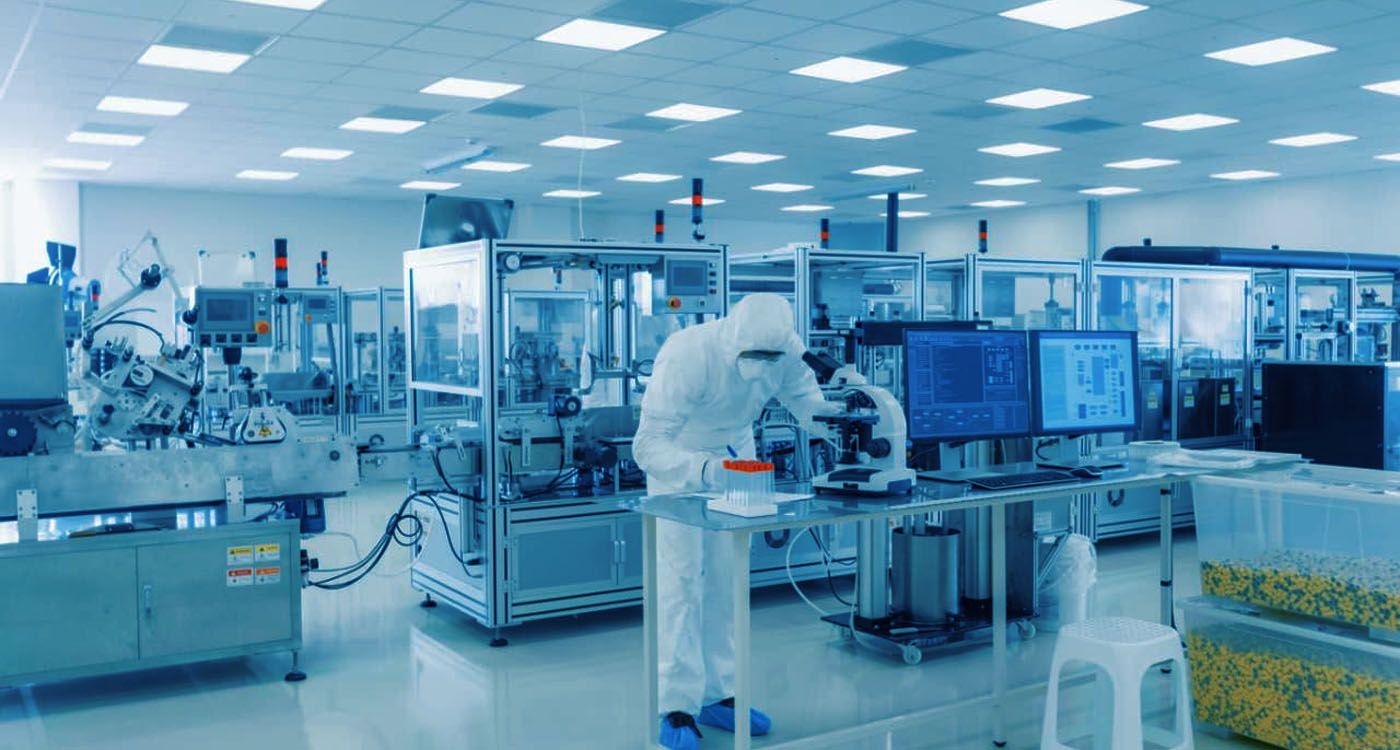
Long a showcase of the Lebanese model of economic openness, the national pharmaceutical industry has transformed under constraint. In a few years, local production has stepped out of the shadows to the light, but can it sustainably impose itself in a landscape still dominated by imports? What medicines does it produce? In what quantity? What share does this production represent compared to total consumption? How many factories exist on the territory? This is Beirut reaks down the key challenges of a sector in full transformation.
Lebanon has always played a central role in the health field in the Middle East. A land of renowned hospitals, foreign-trained doctors, Gulf patients and proven pharmaceutical know-how, the 1990s saw the return in force of multinational drug companies, firmly established in a country relying on imports as a guarantee of quality in a liberal economy.
A Regional Stronghold Oriented Outward
Until 2019, nearly 90% of the medicines consumed in Lebanon were imported, confirming the model of a market largely open to the outside. The Lebanese health system is mostly private, which favors prescriptions with high added value.
Brand-name drugs, prescribed in 6 out of 10 prescriptions according to a 2018 Blominvest Bank study, remained symbols of prestige, trust, and even social status. In Lebanese pharmacy shelves, “Swiss Made” was worth more than “Made in Lebanon.”
Still according to this report, the sector, fragmented among about fifty importers and subject to fixed margins, offered no economies of scale. Imports reigned; local production struggled to exist.
The Blast That Disrupts the Balance
October 2019: the economic and financial crisis breaks out. The Lebanese pound collapses, bank accounts are frozen, purchasing power evaporates. The Central Bank can no longer subsidize the importation of medicines, prices explode, shortages settle in.
Thrown off balance, the Lebanese discover – or rediscover – locally produced medicines. With no alternative, the national industry mobilizes. A silent revolution is underway.
An Unexpected but Structured Rise
According to Dr. Carol Abi Karam, the President of the Syndicate of Pharmaceutical Industries in Lebanon (SPIL), local production jumped by 30% as early as 2020. Lebanon counts 13 pharmaceutical factories. More than 1,160 medicines are now manufactured locally, covering a wide range: generics, biosimilars, solid forms, injectables and intravenous forms.
“At the same time, local production has diversified, with advances in several key categories, including diabetes, antibiotics, antiepileptics, anticoagulants, and even some oncology treatments. This upgrade comes with a notable price advantage: medicines made in Lebanon cost on average 40 to 50% less than imported brands, while remaining 20 to 30% more competitive than many foreign generics,” she specifies to Ici Beyrouth.
“Today, 100% of intravenous serums consumed in Lebanon are made locally,” she adds. And since 2024, a Lebanese factory also produces infant formula.
Before the crisis, the market share of local medicines did not exceed 11% in volume. It now stands at around 25% – though exact figures are hard to verify due to distortions linked to smuggling, international aid and incomplete statistics.
This dynamic, driven by the collapse of purchasing power and the search for accessible solutions, is beginning to shift in 2025 with the gradual return of dollarization and a relative recovery in consumption. Lebanese people are slowly turning again toward European or American brands, notably in wealthy circles or for certain specialized treatments. But a significant part of the population, used to effective and affordable local medicines, might well remain loyal, at least for chronic treatments.
An Enduring Dependence on Imports
Despite this rise, imports still represented 88% (in value) of total sales in 2024, according to Fitch Solutions. A paradox? Not really. The Lebanese market, estimated at $800 million in 2024 (down 11% compared to 2023), remains structured around a network of historic importers. Their role remains central, especially for specialized, innovative or hospital-use medicines.
The President of the Association of Medicine Importers in Lebanon, Joe Ghorayeb, does not deny it: “Local production has progressed, but it cannot yet cover all the therapeutic needs of the country.”
An Opportunity Under Constraint
For Dr. Abi Karam, it is time for the state to support the local momentum. “The Lebanese model is certainly a free market one. But that does not prevent the state from supporting a sector that has proven itself. The pharmaceutical industry is complementary and sustainable.”
She cites Saudi Arabia and Jordan, where non-tariff barriers, even import bans (like in Egypt), protect national productions. “In Lebanon, we have proven that we can produce locally, reliably. These gains must be consolidated.”
Remaining Obstacles
The sector remains weakened by the high cost of energy, difficult access to bank credit, the lack of “fresh” currency and smuggling towards Syria, which weighs on local availability. Thus, some medicines produced in Lebanon are sometimes unavailable in pharmacies.
Added to this is a distrust still present among some prescribers and patients. Even if mindsets are evolving, many still associate local generics with lower quality. A perception that manufacturers strive to correct through certification, traceability, quality audits and international partnerships.
Exporting to Survive?
To compensate for the weakness of the domestic market, several Lebanese manufacturers turn to the international market. In 2017, 83% of Lebanese medicine exports were destined for Arab countries (Iraq, UAE, Kuwait). Markets like Cyprus or some European countries are cautiously opening, but competition is tough and access barriers are high.
The paradox is here: to survive, Lebanese manufacturers sometimes export part of their production, even if it exacerbates local shortages.
A Sector in Flux: Between Hope and Uncertainty
Lebanon missed the opportunity, in its boom years, to structure a real pharmaceutical industry. It is the crisis that pushed actors to reinvent themselves, sometimes successfully. The local sector, boosted by constraint, has become a credible alternative.
But without a coherent public policy, effective regulation and a national investment plan, it will remain on life support.
The potential exists, the know-how too. The challenge is to move past survival to building an industry.




Comments